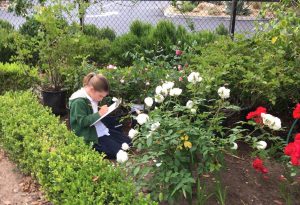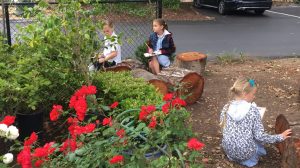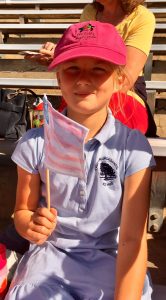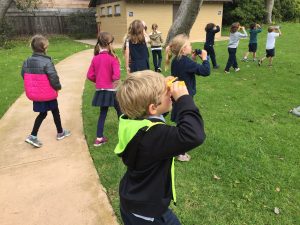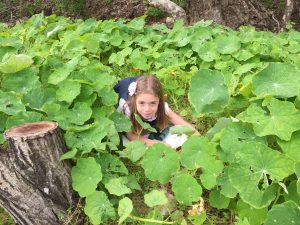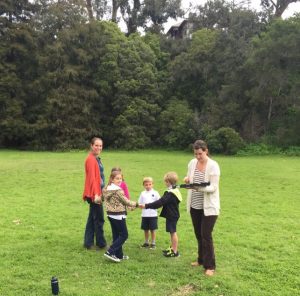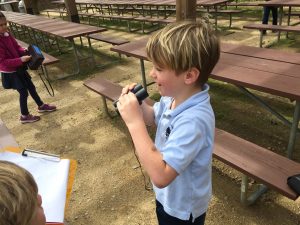We are beginning our final writing unit of the school year, and it’s one of my favorites: poetry. To begin, we have been discussing the differences between poetry and prose, and we have really focused in on descriptive language. I told the students that poems are sometimes called “word paintings” because poets paint vivid images in the reader’s mind using only words. We also talked about when and why a poet might choose to “break” a writing “rule” in a poem to give a specific effect. By the time we reviewed some examples, the students were itching to start creating their own poems.
Yesterday, we reviewed our senses of sight, smell, taste, touch, and hearing. Today, we exercised paying close attention to those senses as we went on a “mini-field trip” to our school’s garden. The students took notes on what they heard, felt, saw, smelled, and tasted in the garden. (Actually, we just imagined what one might taste in a garden because we visited a flower garden.)
Then, we came back to class to write our own free-verse poems. I am so impressed by the creativity of these students! Their beautiful work speaks for itself:

I hear birds chirping. I see spiky leaves and red, white, purple, and pink flowers. I smell mint leaves and oranges. I feel the cool breeze. I taste strawberries and mint leaves.


I see a bunch of birds. I hear them tweeting, too. I smell flowers and nectar, don’t you? I feel a soft breeze and red and white roses, too. I’m feeling a rough bench and fresh cut grass, too.
I am so excited to see these budding poets develop after such a wonderful introduction!



